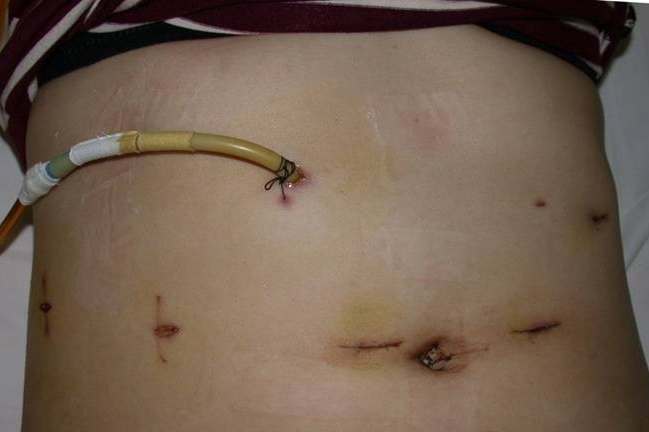Wound drainage is commonly used in a variety of surgical procedures to drain excess exudate and prevent complications such as infection and hematoma. To prevent migration, reduce the risk of infection and minimize patient discomfort, it is important that wound drains are correctly secured.
Suture fixation solutions are commonly used to secure surgical wound drainage. Although it is a widely accepted fixation technique, it must be acknowledged that suture fixation has a range of risks and potential complications.
Suture fixation is the use of medical sutures to secure a drain to or around the skin site of a surgical wound or incision. The main aim is to prevent the drain from disposition or falling out during drainage. The use of suture fixation requires a puncture of the skin, which may result in certain risks and potential complications, mainly including:

1. Infection
Infection is a risk associated with any surgical procedure including suture fixation. If proper aseptic technique is not followed during the fixation process, bacteria can enter the puncture site and cause an infection. Patients may experience redness, swelling, warmth and increased pain around the wound.
Additionally, leakage of exudate from the post-operative drainage site may invade the skin puncture site, leading to a much higher risk of infection.
2. Skin irritation
Sutures used for fixation can sometimes cause skin irritation or allergic reactions in some patients. This irritation can manifest as redness, itching, or discomfort around the suturing fixation area. Patients should inform their healthcare provider of any known allergies. Physicians and nurses should choose sutures that are less likely to cause an allergic reaction or use a non-invasive drain fixation device to secure the drainage tube.
3. Suture Complications
Problems may occur with the suture itself, such as suture breakage or loosening. If the suture breaks or loosens, it can affect the stability of the drainage tube, which may lead to accidental dislodgement and displacement of the drain. Regular monitoring of suturing fixation site is essential to identify and resolve any problems in a timely manner. The use of a non-invasive fixation device that replaces the suture fixation method is a good option.
4. Patients' discomfort
Patients may experience discomfort or pain at the suture puncture site. This pulling pain and discomfort can impede movement and affect the overall quality of life during wound drainage. The use of a non-invasive drainage fixation device will greatly improve drainage comfort.
5. Scarring
Suture fixation can sometimes result in visible scarring, especially if the suture puncture is in a visible area. Although this is only cosmetic, it can affect the patient’s self-esteem.
Although suture fixation is a common method of drain fixation for surgical wounds, it carries a number of risks and potential complications. Healthcare providers must carefully weigh the benefits and potential complications and take all necessary precautions to minimize these risks.
A non-invasive drain fixation device is now available to replace sutures for surgical wound drains: LOOPIX wound drainage tube fixing device, which can fix most drain tubes except vascular catheters and urinary catheters (the applicable tube size range: 6 ~ 28 Fr), effectively reducing infection, skin irritation, drain dislodgement/dislocation, and greatly improving patient comfort as well as decreasing possible postoperative complications such as scarring.
